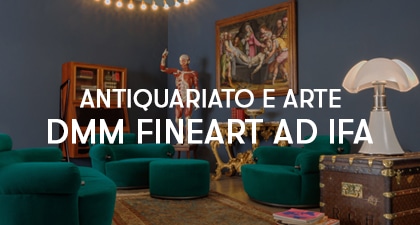
In front of this series of Ethiopian paintings, dating back to the 1930s, I cannot help but be swept up in a whirlwind of emotions.
The colors are vivid, unreal, almost bordering on expressionist and naive exaggerations, and the scenes speak a simple, “comic-like” language that aims for an immediate and direct perception.
The parallel that immediately comes to mind is with our painter Ligabue, the “madman” capable of speaking directly to emotions.

I follow the stories of the Queen of Sheba in twenty panels, and again, in three adjacent spaces, the grim events of the hunt for rebels, and in collective frescoes, daily life during peacetime. And then a surprising Ras Tafari crowned emperor and embraced by the Madonna, blessed by the Holy Spirit.
Yes, even the subjects are curious: a mix of African and Western culture, and they stimulate my desire to learn more.
In fact, Ethiopia has a very unique history: situated between Africa and Asia, and between the Mediterranean and the Indian Ocean, it was a crossroads and meeting point of different cultures, also stimulated by constant and intense trade flows.

Five centuries before Christ, the Aksum dynasty stabilized; under this reign, in the fourth century AD, Christianity became the state religion, in its Coptic Orthodox version.
However, medieval sacred texts also speak of a direct connection with one of the ten lost Jewish tribes, which had taken refuge in Ethiopia, and from which the royal lineage descended through the Queen of Sheba.
Indeed, in Ethiopia today, the Falasha tribe lives on, the only black Jews, the first historical references of whom date back to 600 AD.
Ethiopia was thus a Jewish-Christian stronghold, with African influences, but should be considered almost the southern edge of Mediterranean culture.
From these premises, I begin to understand a bit better the subjects depicted, and the overlap of white, black, and mixed-race human figures, along with symbols belonging to Western culture,
represented with a two-dimensional, almost Byzantine approach, like Eastern icons.
But let’s get to the story of these paintings: where do they come from? How did they make their way to Italy?
The obvious connection, found in the correspondence of the family from which they were purchased, is the Italian presence in Ethiopia during the 1930s and the activity of their grandfather, lawyer xxxx.
He was sent to Addis Ababa in 1935 as a legal expert in contract law, working for an Italian company.
We have some photos and postcards sent to the family from Addis Ababa.
It was here, as he recounts in his memoir, that he was approached in 1938 by the local Secretary of the Fascist Party who, on behalf of Marshal Graziani and by order of the Federal Bofondi, demanded that he leave the city “because he was an anti-fascist.”
The paintings, brought to Italy, remained in the family collection in a small village in the province of Viterbo until their recent acquisition.
And even today, almost a hundred years after their creation, they still convey universal emotions and feelings that cross all of humanity, regardless of skin color.




























